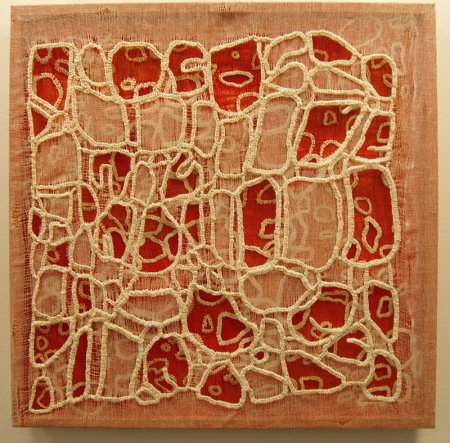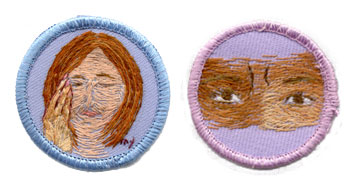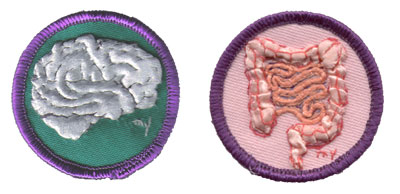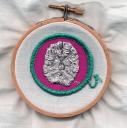Wow, embroidered brains—where have I seen that before? Dave called me at home about a week ago, saying there was a show at the Warneford that I wouldn’t believe. He said it had pictures of deadly diseases, like breast cancer and HIV. Because of my recent fascination with MRI’s and all those colorful pictures of human insides, I thought he was joking. I had, after all, just put up my embroidered brain patches in the Warneford’s Apple Room.
But whereas I have been embroidering miniature versions of human organs, the show at Warneford’s Artscape Gallery contained super-magnified images of microscopic threats to human health and survival.
The exhibit, called “Designs for Life,” is an impressive textile collaboration, rivaling The Dinner Party in scope, complexity and emphasis on communal participation.
This textile art/science project reveals and celebrates the microbes and particulate matter that affect human health. 30 panels, each 50×50 cm, were created through the efforts of the lead designer Anne Griffiths, 1000 scientists and 150 members of the Womens Institute of Oxfordshire. Diamond Light Source, the scientific partner in the project, contributed images from its synchrotron, a ‘super microscope’ capable of magnifying a flu virus or Alzheimer plaque to reveal its structure and aid in biomedical research.
Techniques include hand-dyeing of fabric, hand and machine embroidery, quilting and appliqué. A friend once told me that because of osteoporosis, her bones “looked like lace.” In this panel on osteoporosis, layers of transparent scrim are edged with needle lace:
(to be continued)













